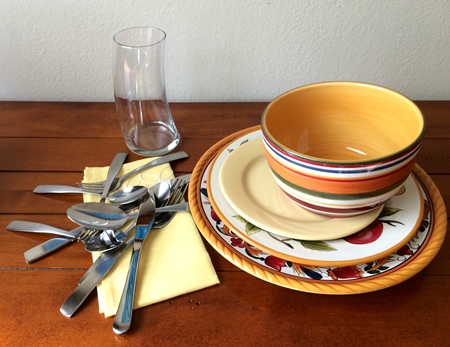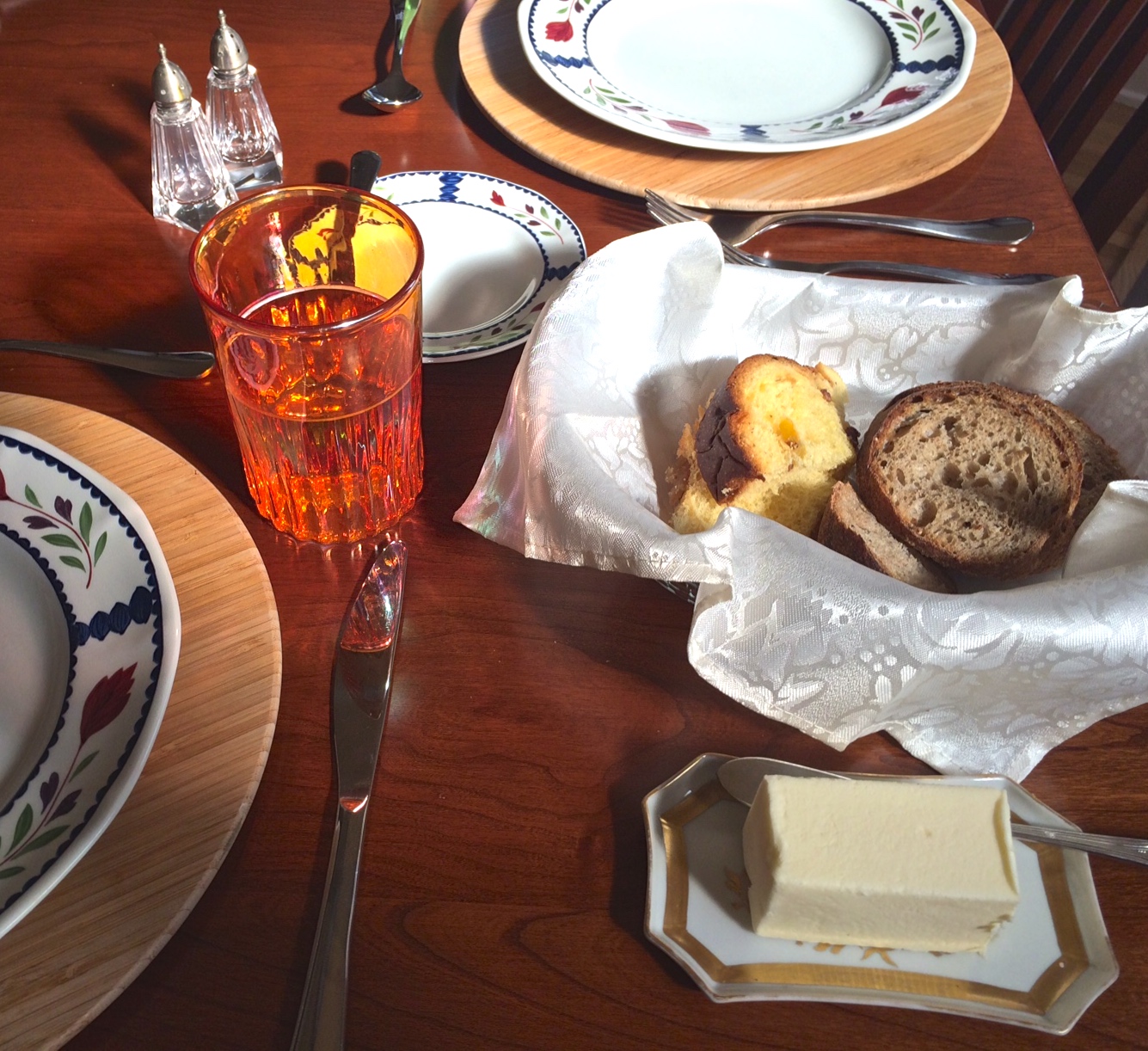Why Do Americans Eat Using a
Four-step Method?

There is a noted difference in American and Continental dining styles. Americans use a four-step method of eating, while nearly all other knife and fork countries use a two-step method of eating. We Americans love our individualism, but why the difference in dining styles?
Probably the most correct answer is that we really don’t know exactly why, though many studied people have attempted to trace the where, when, and overlaps in comparing the way Americans and Europeans claim their dining styles.
The history of eating utensils and dining habits reflects a natural history of the evolution of and adaptations of tools and the art of food preparation within cultures. Circumstances of hardships, good times, royal marriages, and fads and fancies have contributed to much diversity at any one time.
Hands, fingers and sharp knives were the typical eating tools for centuries, though the wooden spoon was an early comer on the dining scene. When eating utensils were first used, they were not mass-produced, so households did not own the large sets we are accustomed to today. In fact, people brought their own knives when dining with others. And in an act of chivalry, as women typically didn’t carry knives, the men kindly cut their food for them.
In the Beginning . . . as Far as We Know
The four-step dining used in America actually began in Europe as the use of table utensils gained popularity. My research uncovered these ancestral steps that led to this method of eating:
- Cardinal Richelieu, chief minister to French King Louise XIII (1624-42), was allegedly so disgusted by the habit of guests picking their teeth with the point of a knife, that he ordered offenders’ knives ground down. Others in the court followed suit. In 1669, King Louis XIV of France decreed that all pointed knives on the dining table (or on the street) were illegal.
- Commonly, people continued to eat with their hands, but with knife rule changes, and before forks were freed up from superstition as the devil’s tool, new uses for spoons began to take hold.
- Most people were (and are) right-handed. The diner could use a spoon in the left hand to steady the food, which now had to be cut with the blunt knife. And being right-handed, the diner would place the knife down on his plate, switch the spoon to the right hand for ease in bringing food to his mouth, and eat the bite of food off the spoon. For right-handers, it would be hard to pick up the cut piece of food with the spoon in the left hand, so it's natural to switch to the right. Notice the four-step pattern put into use: Cut, place knife down, switch spoon to left hand, and eat.
Europeans, then, were the first to use a four-step dining practice, which is the basis of the American style of dining today.
In the American Colonies
Cutlery makers in England began making knives with blunt tips and Colonists imported these dining knives. As had been the practice in Europe, food was speared with the tip of a knife, but, again, blunt tips made this difficult. The Colonists adapted the same four-step eating method as the Europeans.
According to James Deetz’s In Small Things Forgotten: An Archaeology of Early American Life, “Using a round-ended knife and not having a fork, one would either have made considerable use of the fingers conveying solid foods to the mouth or made do with the spoon…One could cut food and transfer it to the spoon bowl…If even one generation used knife and spoon in this manner, the fork, upon its belated appearance, would be used in a manner similar to the spoon, which is precisely the way we use it today.”
Though forks were in use in Europe earlier, by the 1850’s, they were in regular use in the United States, and employed in the American “Zig-zag” or “cut and switch” method. The cumbersome and awkward switching of hands continues today even though it was declared out of date as far back as 1948 in Vogue’s Book of Etiquette, written by Millicent Fenwick, then an associate editor of Vogue and later the United States representative to the United Nations Food and Agricultural Organization in Rome.
The Continental Dining Style
In the 1800’s, use of the fork gained popularity in European countries and began the evolution of a new dining style. According to several sources, the upper class stopped shifting their forks back and forth, and the two-step Continental dining style became fashionable after 1850.
Etiquette expert, Lisa Mirza Grotts, sites a French etiquette book of this time: “If you wish to eat in the latest mode favored by fashionable people, you will not change your fork to your right hand after you have cut your meat, but raise it to your mouth in your left hand.”
Throughout knife and fork cultures, the Continental style prevails. The fork stays in the left hand with the tines pointed down, and the knife is held in the right hand. The food is speared by the fork and conveyed to the mouth, with the knife holding steady to cut again or move food onto the fork.
Letitia Baldrige, who revised The Amy Vanderbilt Complete Book of Etiquette, also considered the Continental style more “sensible.” In preparing this book, which was published in 1978, Ms. Baldrige tried in vain to discover how the zig-zag method developed in the United States. “I even called the Library of Congress but they could not come up with anything,” she said. “English nannies,” she continued, “always teach children to pile food up on the back of the fork because that is the quickest way to get the meal over with. Also, the food tastes delicious that way.”
The Evolution Continues
As with all forms of technology, experimenting is an ongoing thing. Individuals are marketing new utensil ideas in the hope they will be viewed as preferable. The “spork” was a fad that is still touted in some places, and time will tell if it catches on.
Americans, however, continue to keep the four-step dining style popular. At least, when knives and forks are in use. Jacob Bronowski points out in The Origins of Knowledge and Imagination, “The rise of casual dining, convenience foods and drive-throughs means that for the first time since the 1500’s we regularly eat complete meals with our hands. Forks and knives may again become the source of confusion…”
In fact, by some market reports, forks are outselling knives two to one. A trend is for more and more diners to opt for single-handed eating and many experts attribute this to the popularity of ready-made meals, pre-cut pizzas, chips and other fast foods.
Regardless of how our use of tableware evolves, sharing meals together with a table set for what is to be served will always be appropriate. The diner can choose what style of eating is best for him or her.
The most important thing is that meals are meant to be shared and bring people together. And that good manners will never go out of style!
Sources:
Colonial American History Stories—1215-1664: Forgotten and Famous Historical Events (Timeline of United States History) by Paul R. Wonning
“Origins of the Common Fork,” by Chad Ward, author of An Edge in the Kitchen
Etiquipedia, an Etiquette Encyclopedia and Etiquette History Blog














